Greetings everyone.
Well, it seems that we from the Dier zoo need to give a lot of explanations for our fellow companions present here. And to begin with, we ask a thousand apologies for keeping everyone in the dark for so long, however the constructions of the new entrance and habitats took longer than we expected, and because of that, the zoo reopening needed to be postponed, for long periods for our anguish. But now, the wait is over, and so our silence, for now on, no more secrets or mysteries, and insteads, we will let the wonders of nature speak for us.
So everyone, come with me, to a tale in the heart of Africa, to meet wonders beyond the human eyes, in an amazing and epic spectacle as old as time, among the many hooves and feathers, where the ancient and new blood meet each other.
So Everyone, welcome to the Dier zoo.
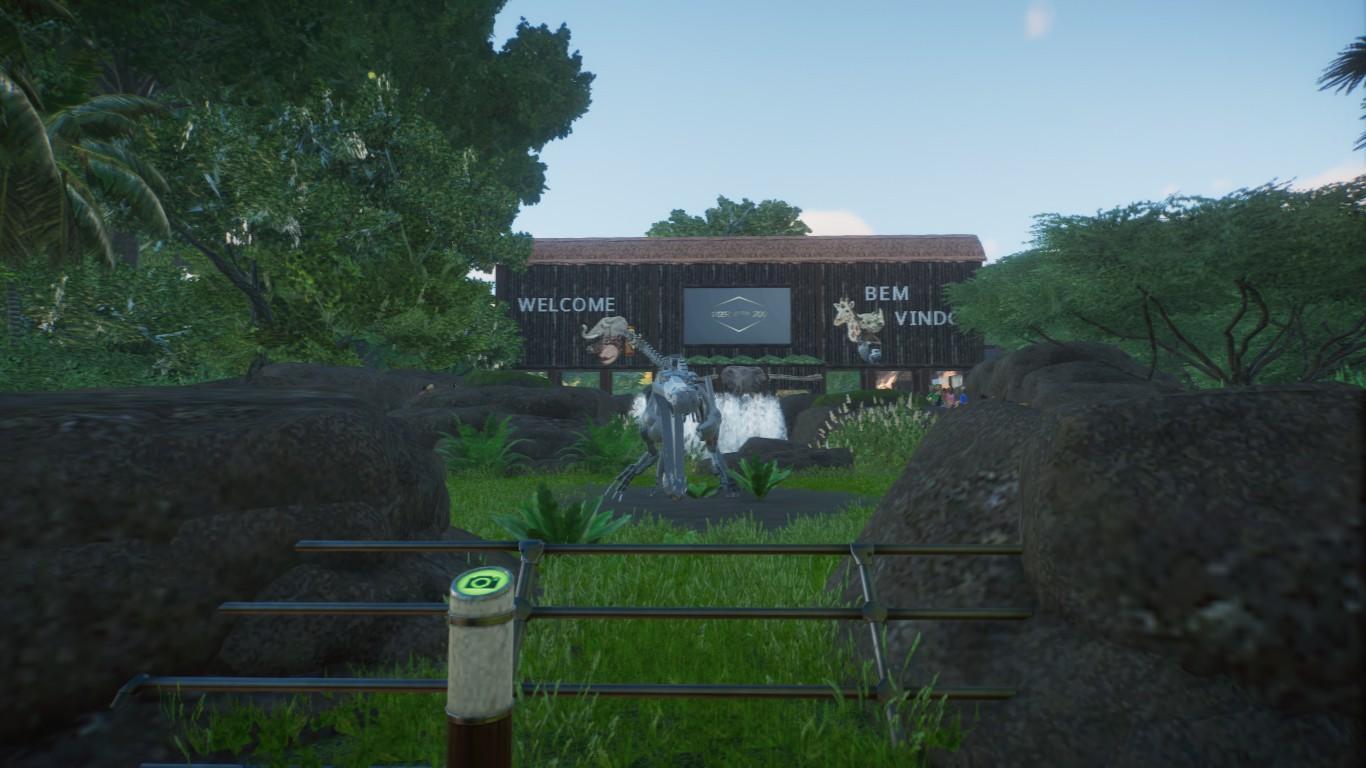
This is our first stop: The new entrance.
Built in a way to give a brief showcase for our guests of the wild that awaits then, the gate showcases six animals that the zoo pretends to have in the future, alongside with two warm welcome messages, written in English and Portuguese, to better understand. Alongside our logo, with its charming cheetah .
But the star of our entrance isn't its rustic architecture, nor the signs or shops, no, this title belongs to our oldest inhabitant, living in this place since the cretaceous, a creature as fascinating as the sands of time, and as majestic as any other creation of mother nature.
It name? Draak, the suchomimus.
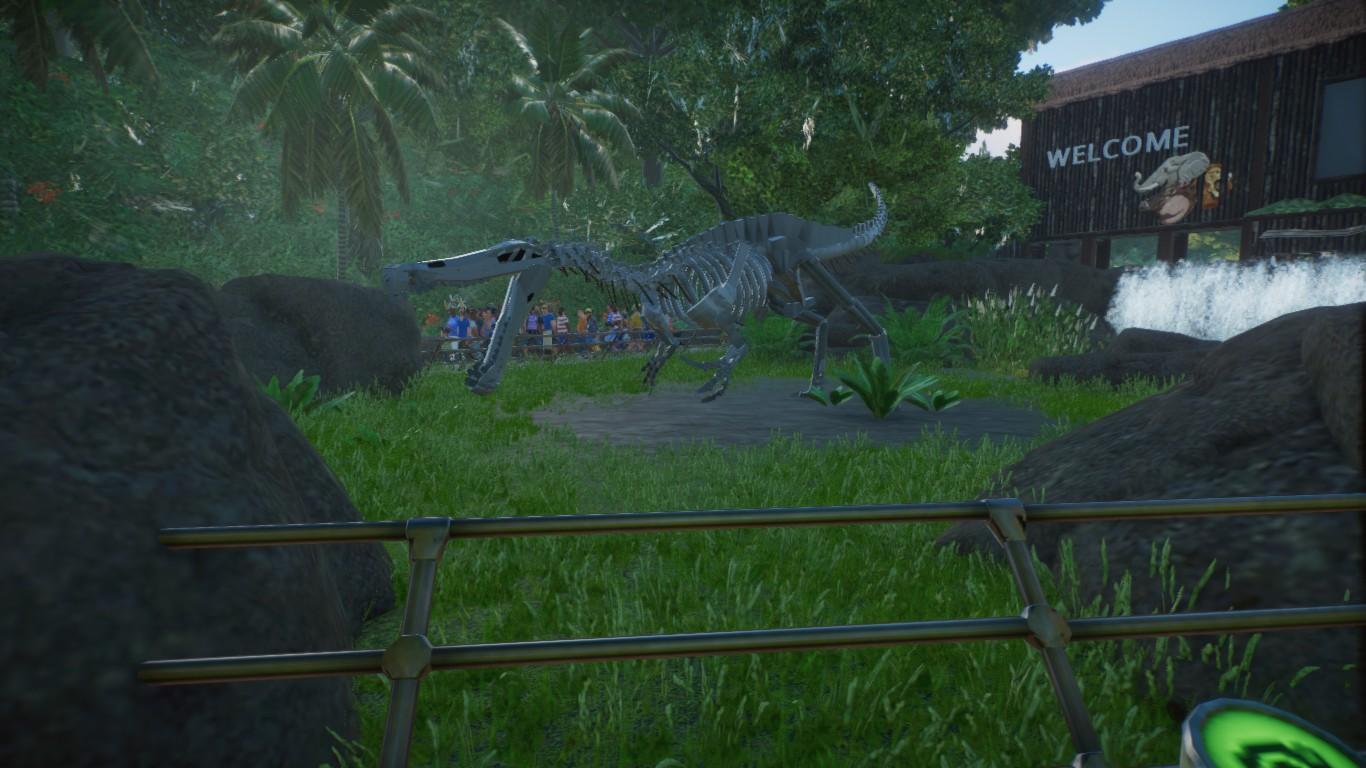
You see, Draak fossil was found back in 1920S, shortly before the outpost the Dier zoo was built around was abandoned, leaving Draak fossil to rot. Our team found his fossil after a Red river hog herd passed on the place, making us take a look at it thanks to the chaos, just to find the fossil, discovered by the hogs. Our team, composed by the keepers Sarah and Galvin, and the caretaker Hannah, was stunned by the almost complete suchomimus fossil, alongside with the register regarding the animal. After that, they contacted the local museum, who collected most of his fossil for research purposes, aside from the skull, which they allowed to stay in the zoo, and they also helped us by giving a replica of the rest of the body. Since this day, Draak has been protecting our zoo gates.
After bypassing Draak, we Finally arrived at the zoo.
The first thing that our guest will see after the entrance is the main plaza, where multiple kiosks, alongside with our gift shop, can be found. In this area, a representation of the four regions of our zoo (Tropicalia, tales of Madagascar, the great savannah and desert outpost) can be found.
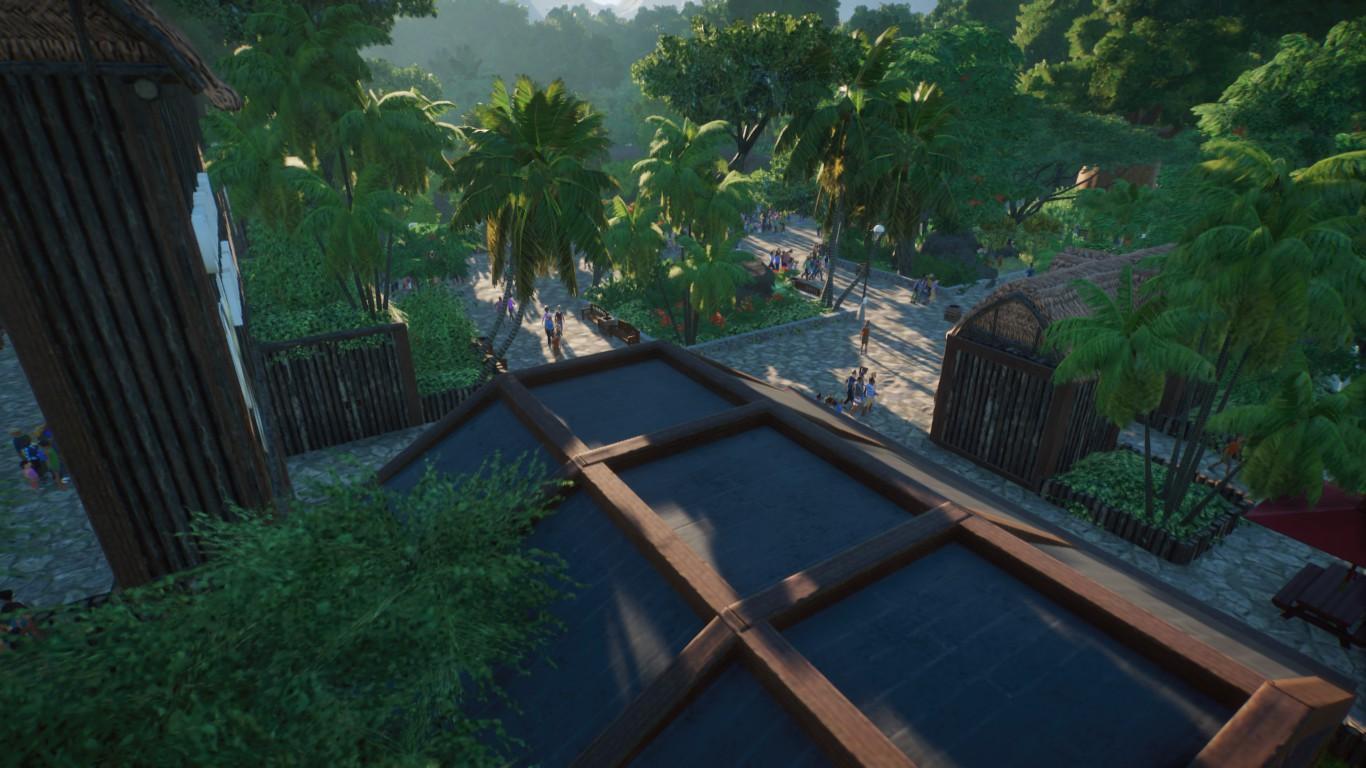
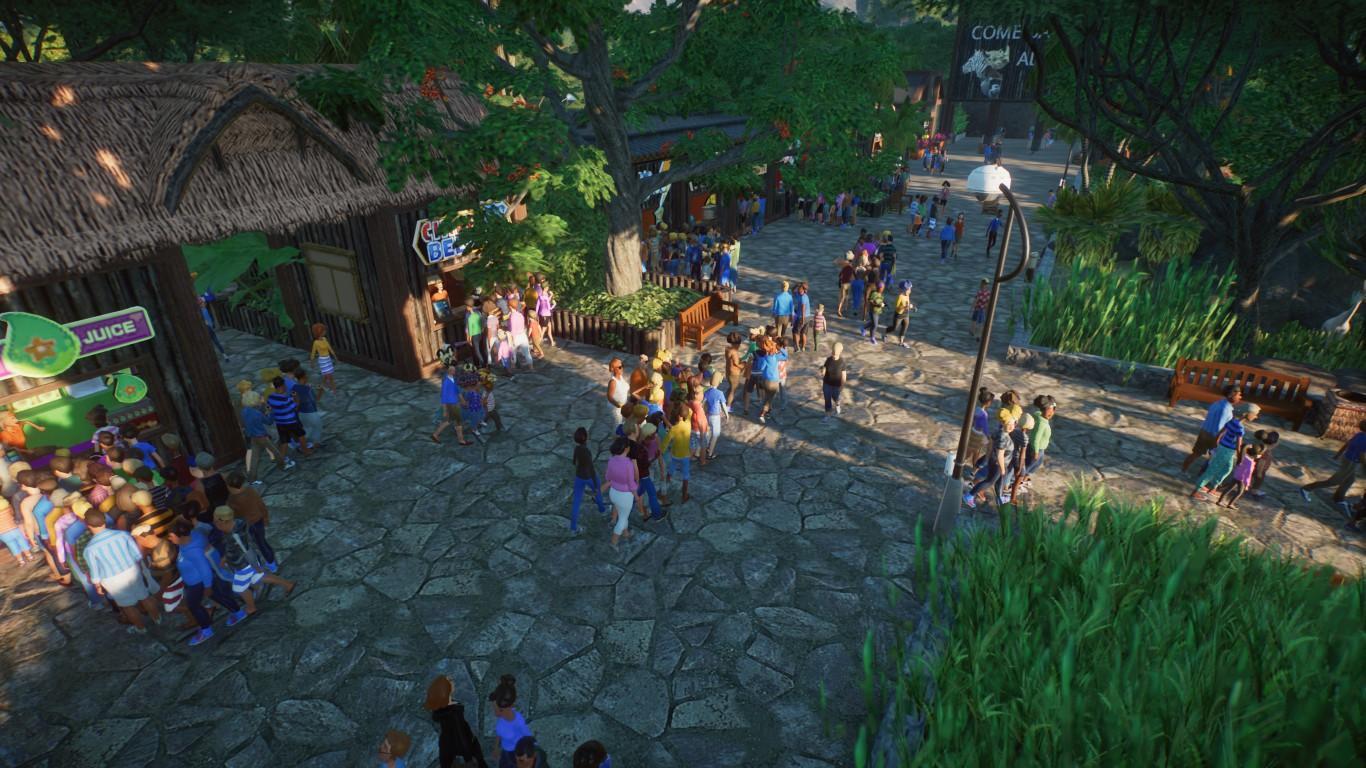
And together with the plaza, the new flamingo habitat can be found:
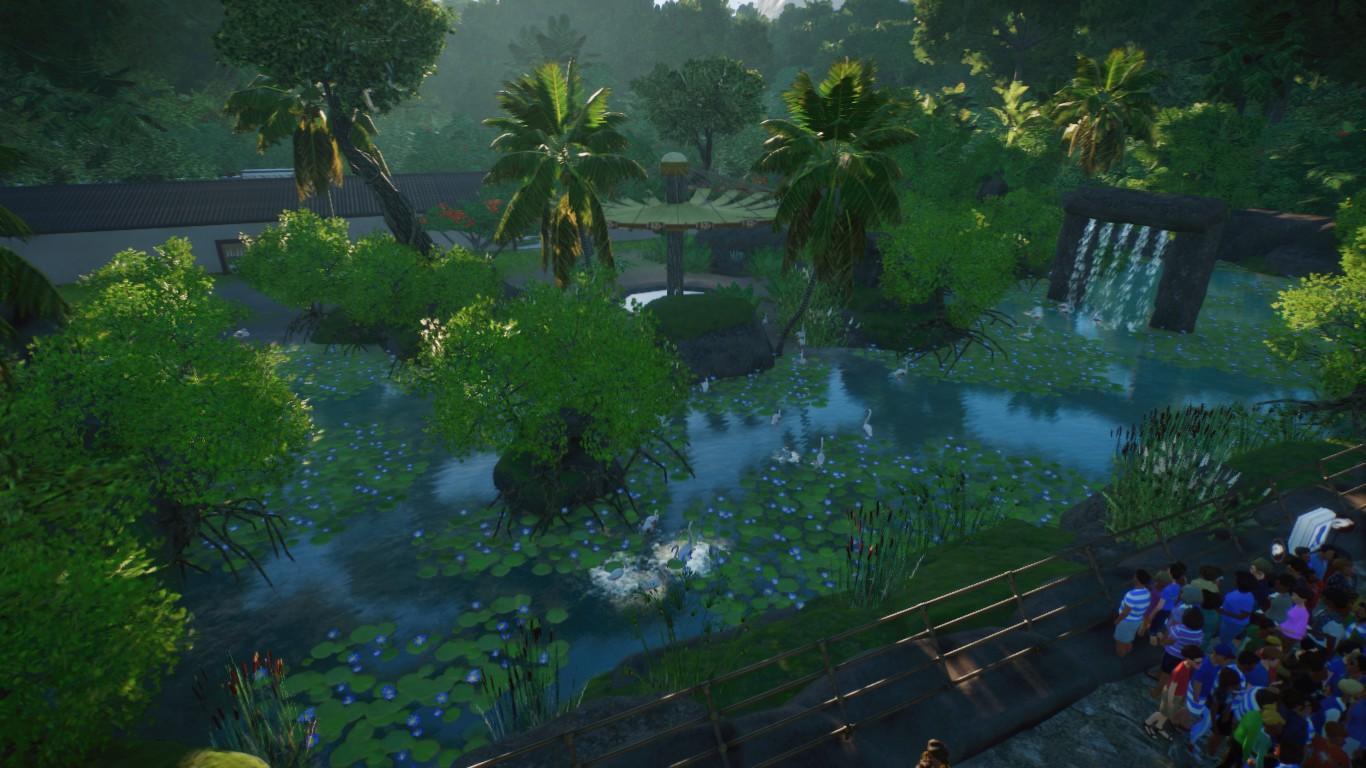
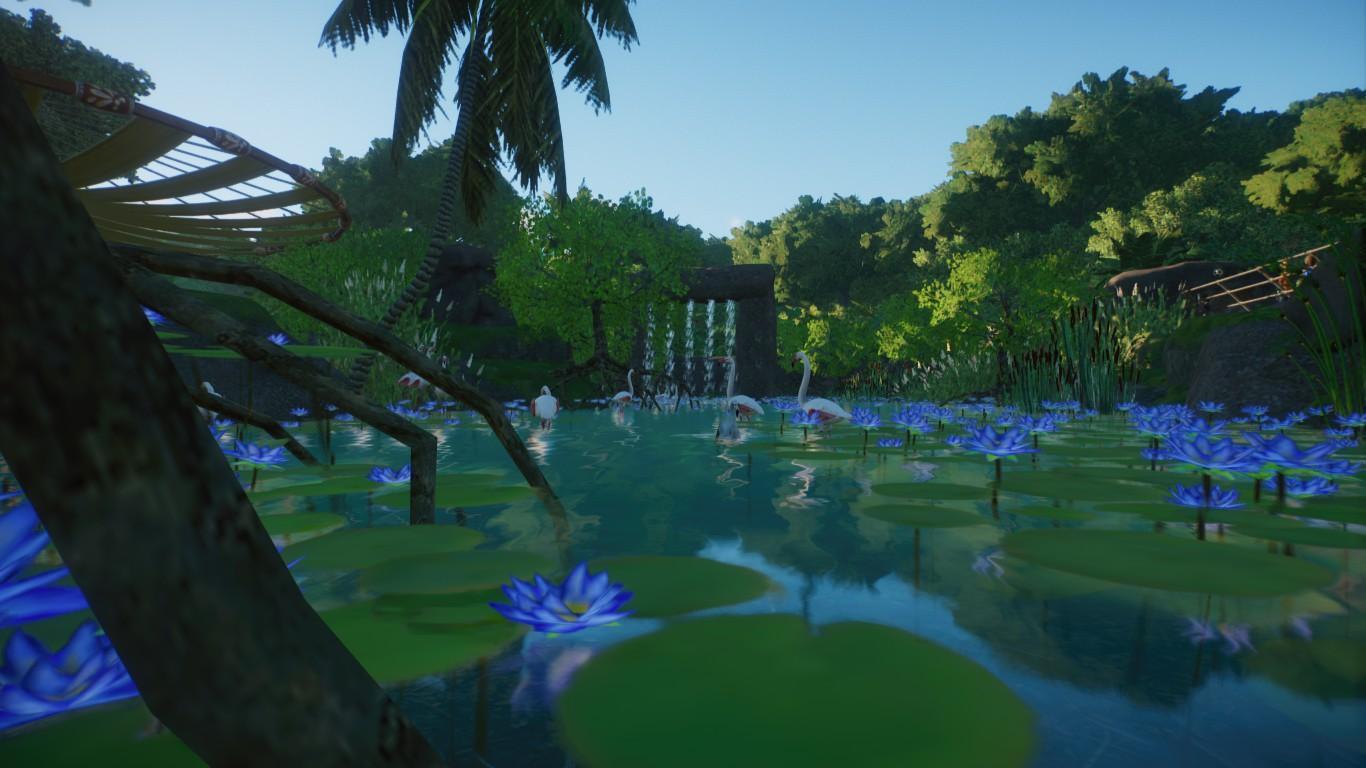
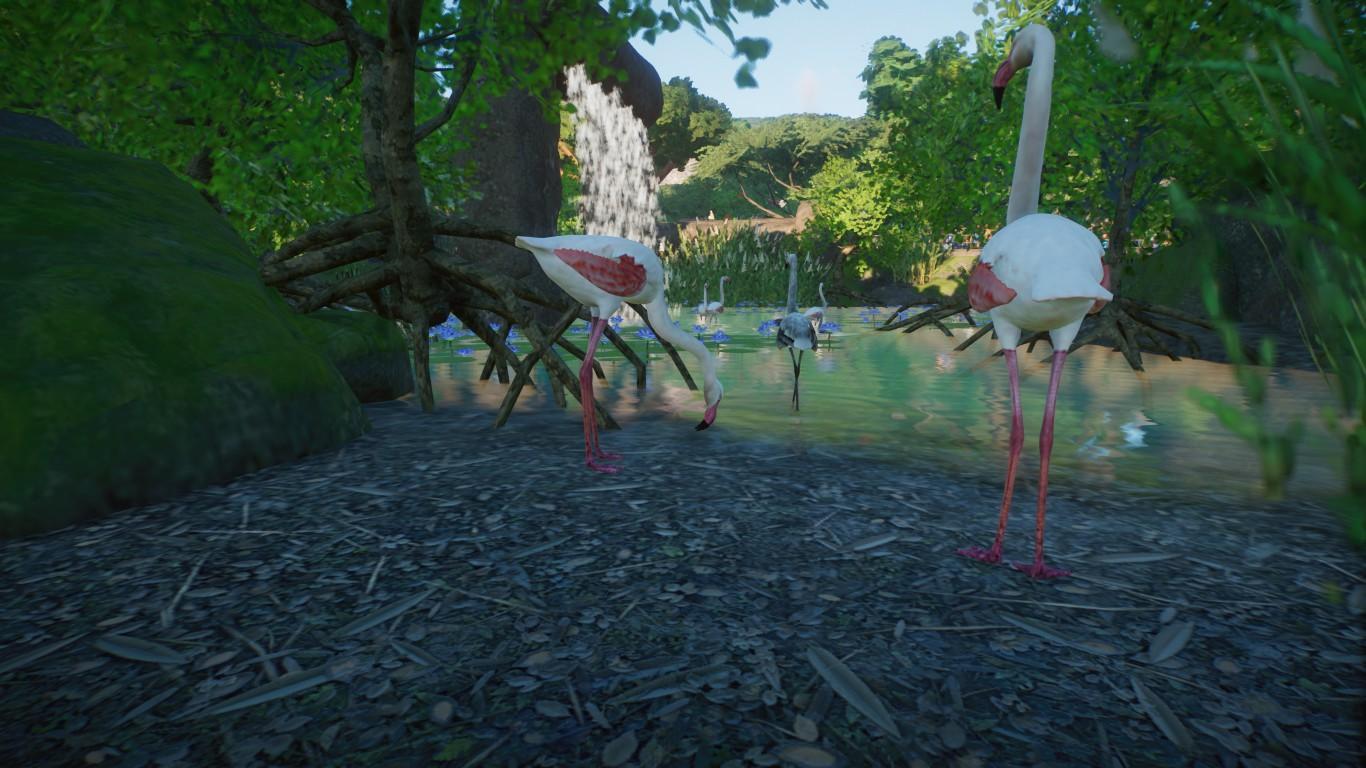
Reborn from the rubbles created by the storm, the new flamingo habitat isn't only a "rebuilt" from the old habitat, far from this, it's a totally new and modern house for our brave birds, a comfortable and pleasing place to live. Here the surviving flamingos from the storm, alongside some newcomers, live peacefully.
After leaving the lush plaza, we can finally find the Jewel (or perhaps, the Heart?) of the Dier zoo.
Remember when we said that the Dier zoo was built around an abandoned outpost? Well, that's not the whole truth. When the portuguese arrived on this land, centuries ago, they were seeking for a place to establish themselves, and they search, leads them to the natives from the group Ovimbundu, how kindly pointed to a place they called "Suku Huis" translated as Suku's household, the portuguese headed to the place, and when they arrived, they were stunned by what the natives have found: a river, big enough to compound multiple boats, irrigated by one of the biggest waterfall they have ever found on that continent. The river was beautiful, with multiple kinds of waterfowls and plants inhabiting the place. But the river dimension and its life wasn't the only thing that trapped their attention, no. They soon notice that by their side, the lush tropical forest takes place, with it tall trees and many strange plants, but the other side was completely different, it was a land of antelopes, with the grass taking the place of the trees, a place, we know as the African savannah.
About the Portuguese, they decided to set up camp on the tropical side of the river, and that camp eventually became the outpost we all know. And regard the river, time didn't affect it, keeping its glory all over those years, but something that has changed, is its name.
Some of the natives, the Ambundos, calls the river Ngana o muenhu, the lord of life, the portuguese calls the river "Rio da sorte" as they considered themselves lucky to find it and the british, after facing a terrible dry and see the place on all it glory, they start calling it "the glorious revenant". But we? We decided to keep using the name given by the Ovimbudos.
So now, please, whitness the glory of the Donderende Kolos, the Thundering colossus!
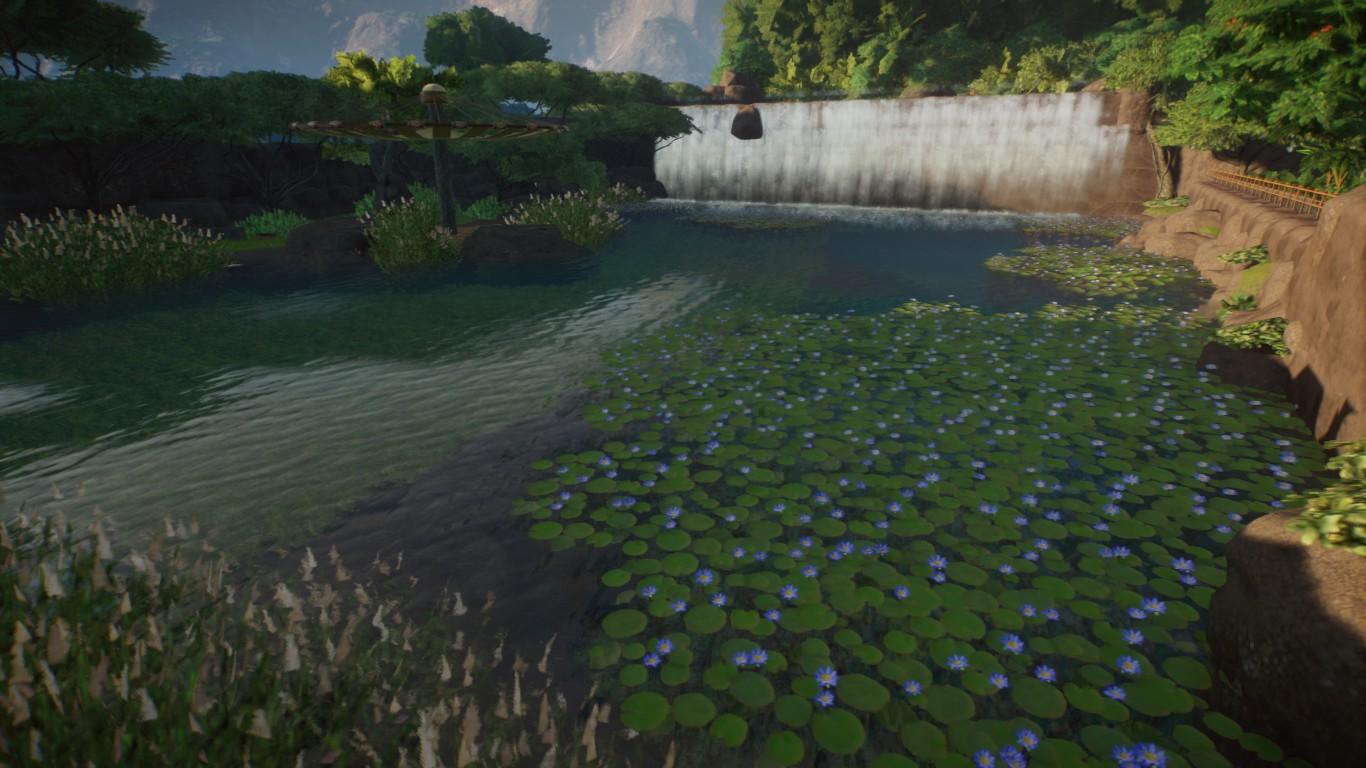
One curious aspect of Donderende Kolos, is that the river has existed since the cretaceous, as Draak fossil was found here, and some of the rocks on it are as old as him, implying that this great place is also one of the oldest known by mankind.
The river and its marges are protected areas, hence we can't build around it, but we can place things, such as umbrellas and allow animals to live nearby, such as the inhabitants of the new habitat: The Nile lechwes.
When the portuguese arrived on the river, the first animal they saw were the lechwes. Those endangered antelopes were eradicated in the surrounding areas during the 20S, when the outpost was abandoned thanks to the destruction caused by certain events. But now those antelopes can roam the river once again, in the new, highly natural habitat:
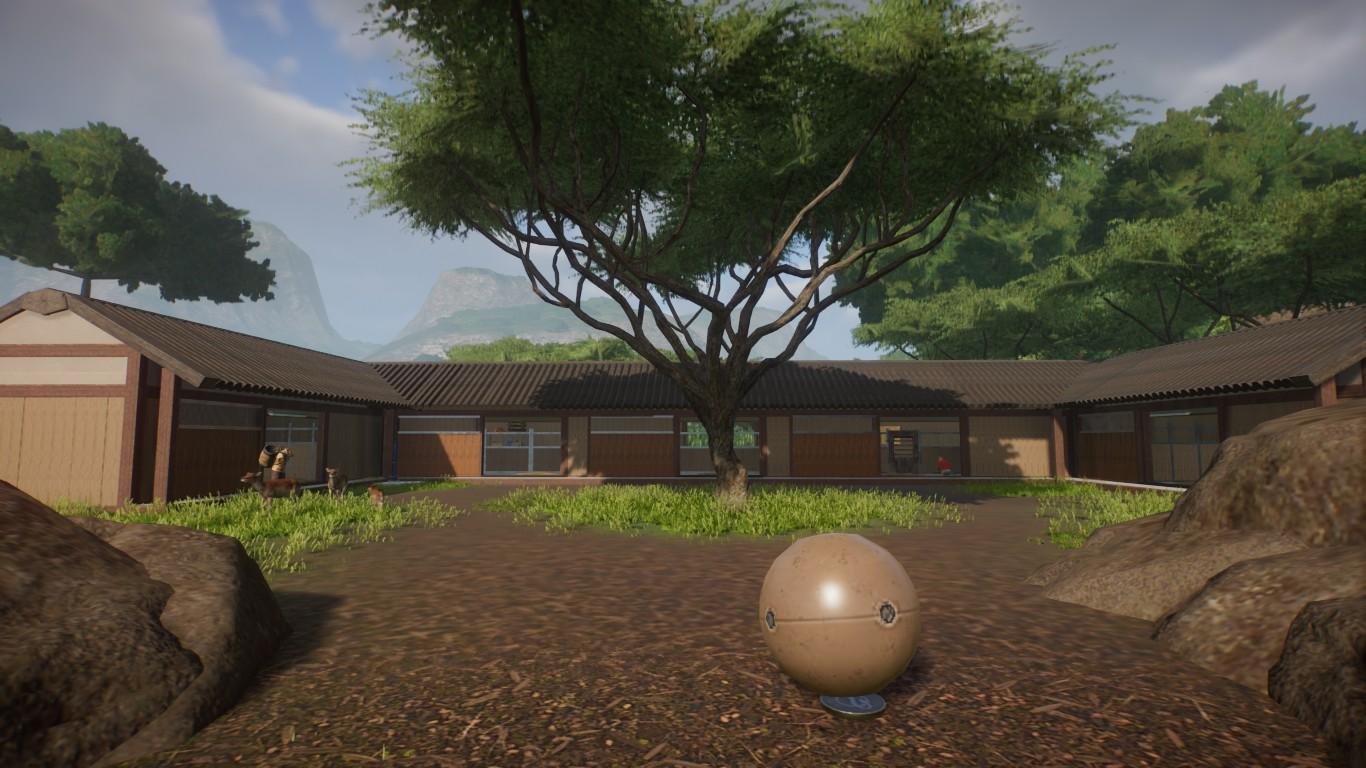
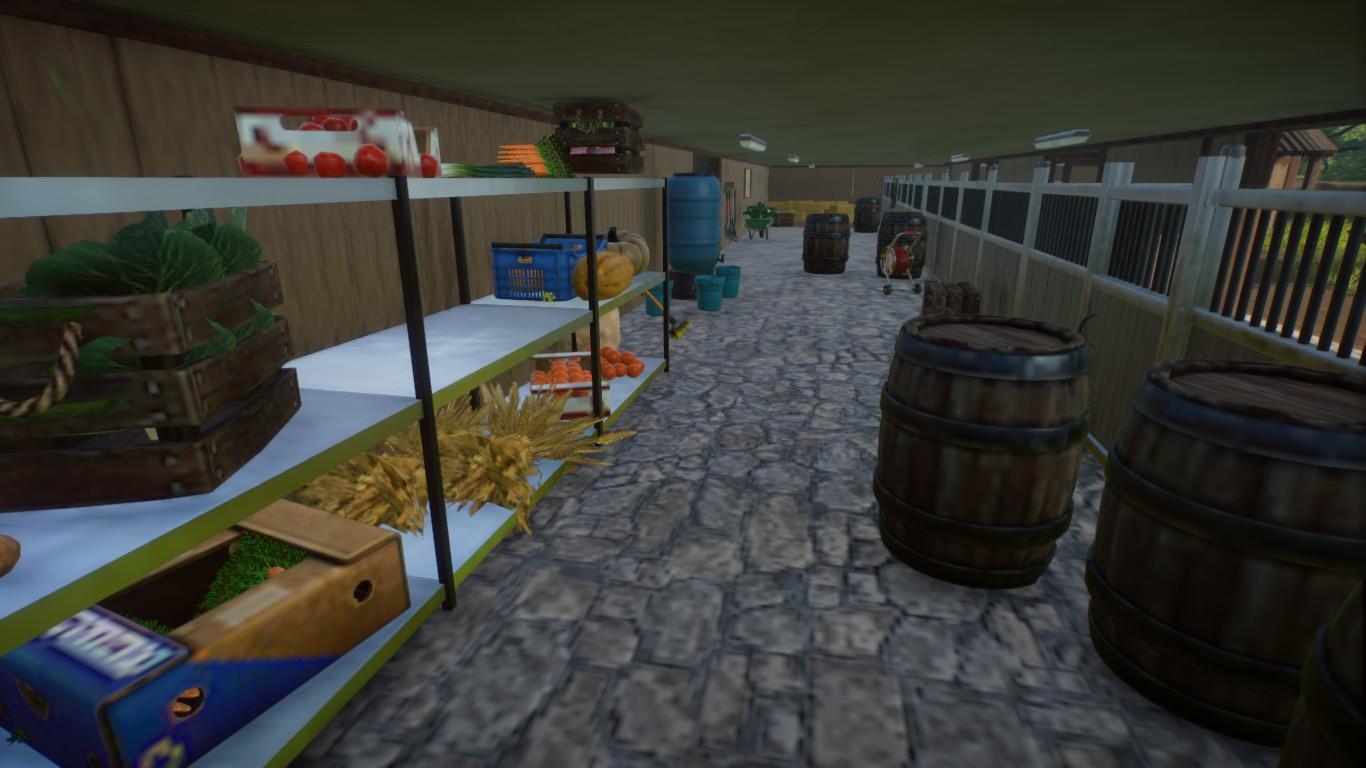
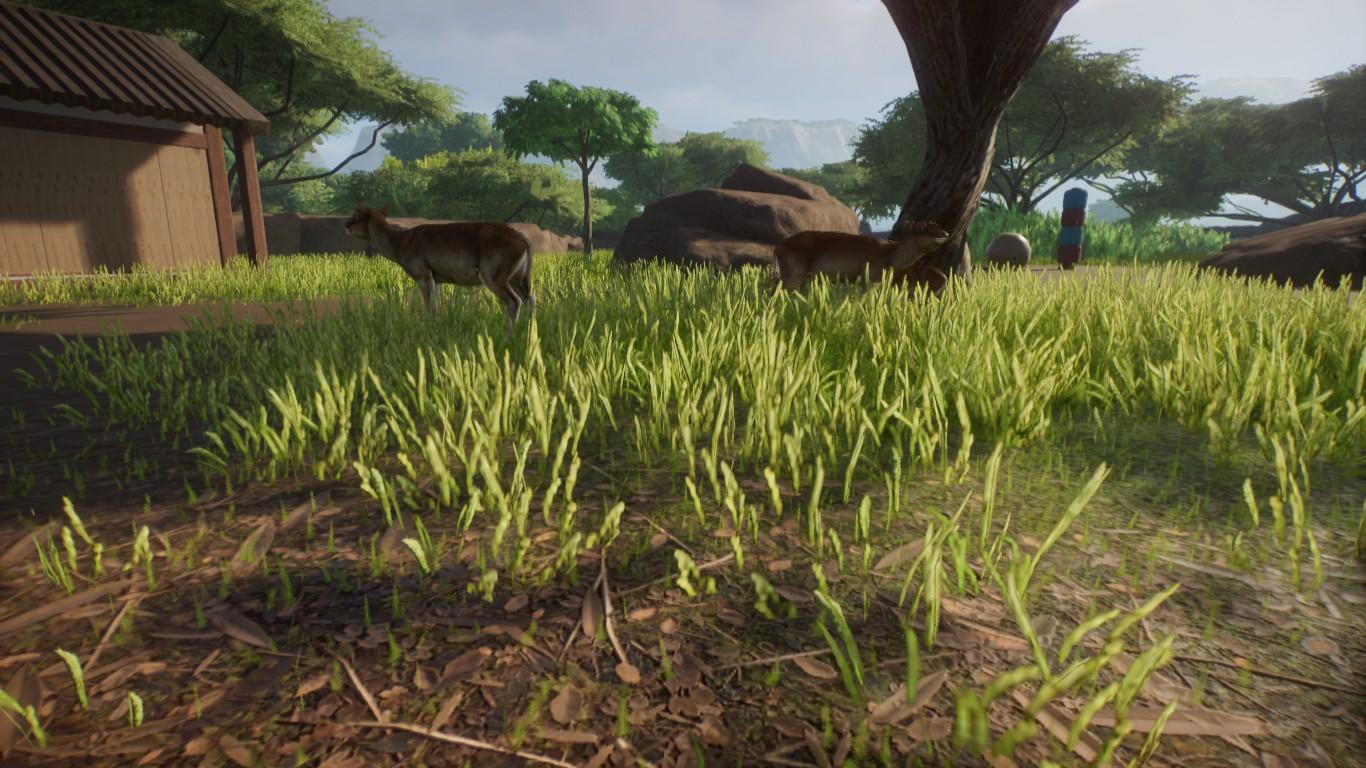
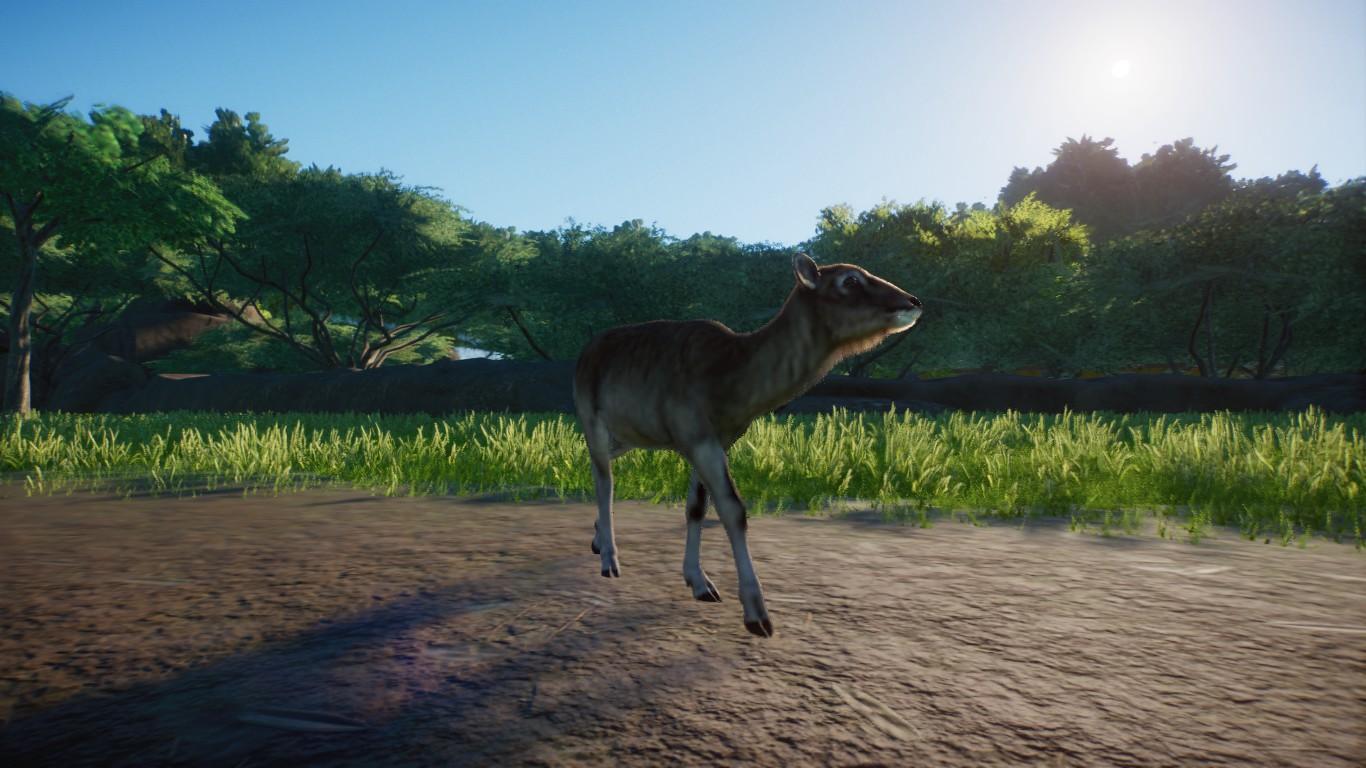
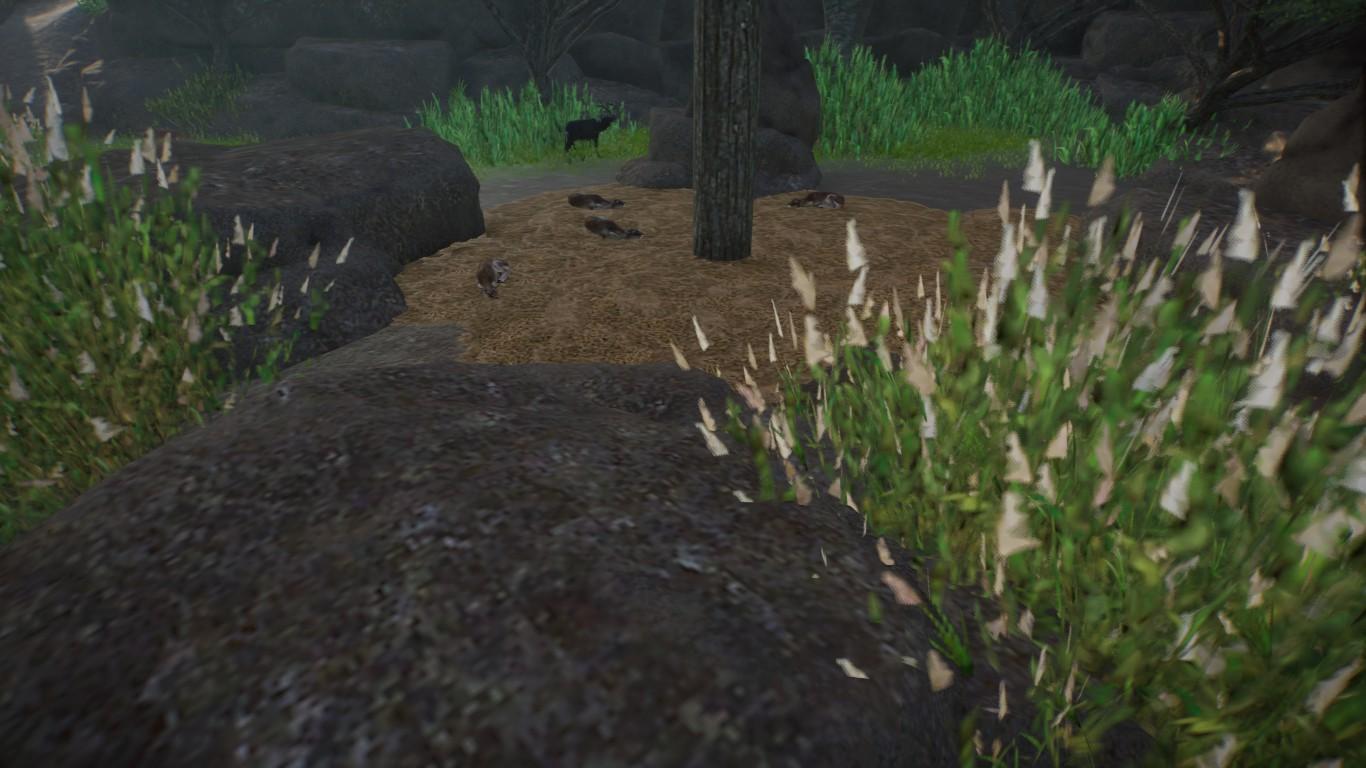
Those old inhabitants are not only back, but they are also back in great numbers, as the Dier zoo herd is one of the greatest herd in captivity, and to our immense joy, they have already started to reproduce, with 4 little calves already born!
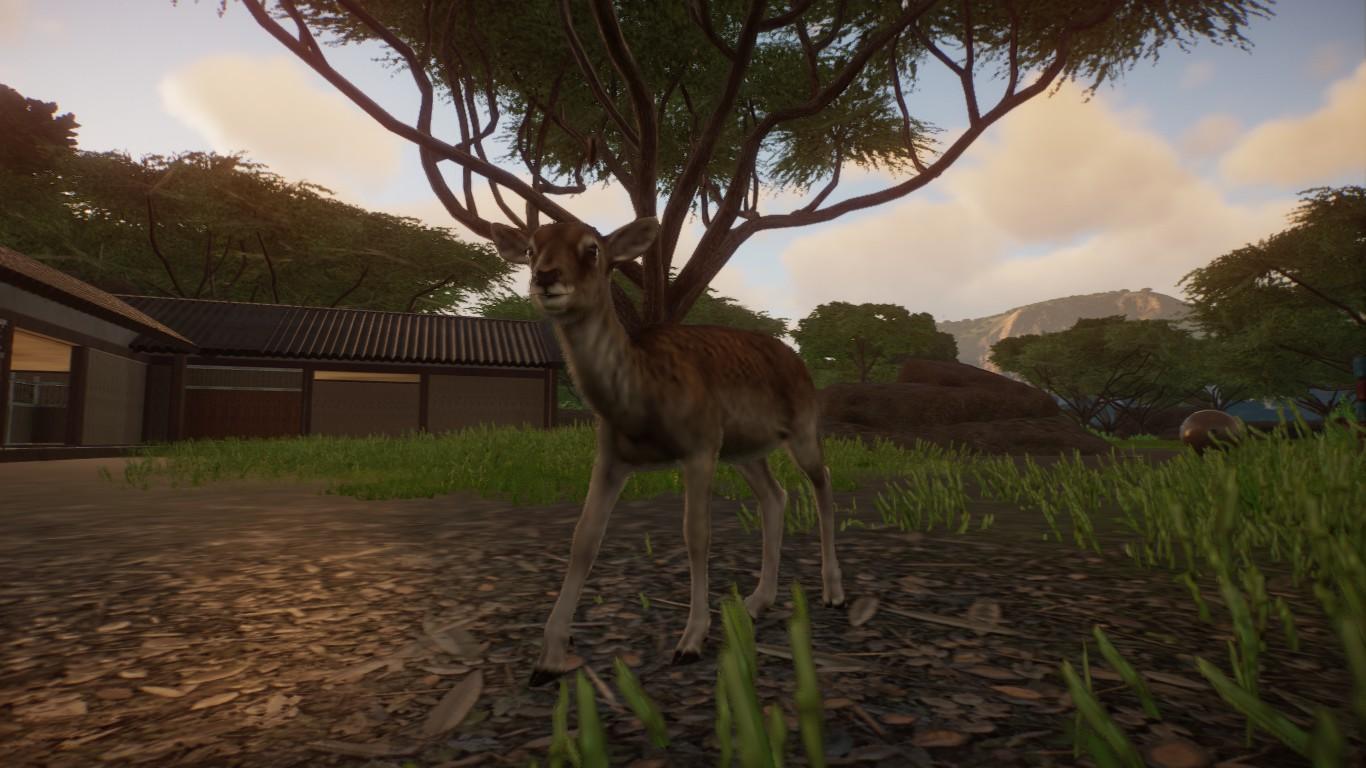
Meanwhile, on the other side of the river, our okapi habitat has some big news to be said.
First of all, Our most beloved inhabitant, Moed, has finally hit adulthood
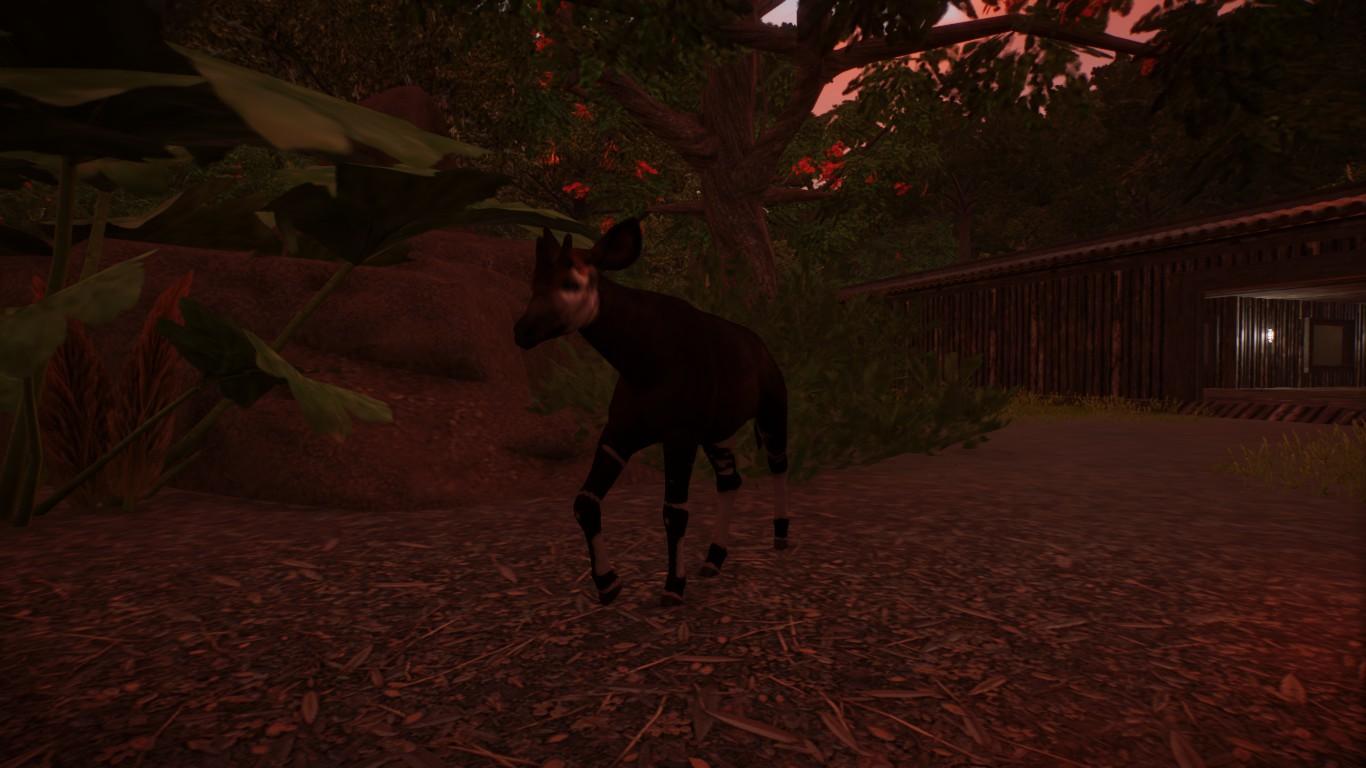
With him being now old enough, we decided that Moed was ready to participate on the conservation programs from okapis, and thanks to a local rescue center that had a female okapi incapable of returning to the wild, we got him a partner.
So now please everyone, give a warm welcome to Emecita, our new okapi.
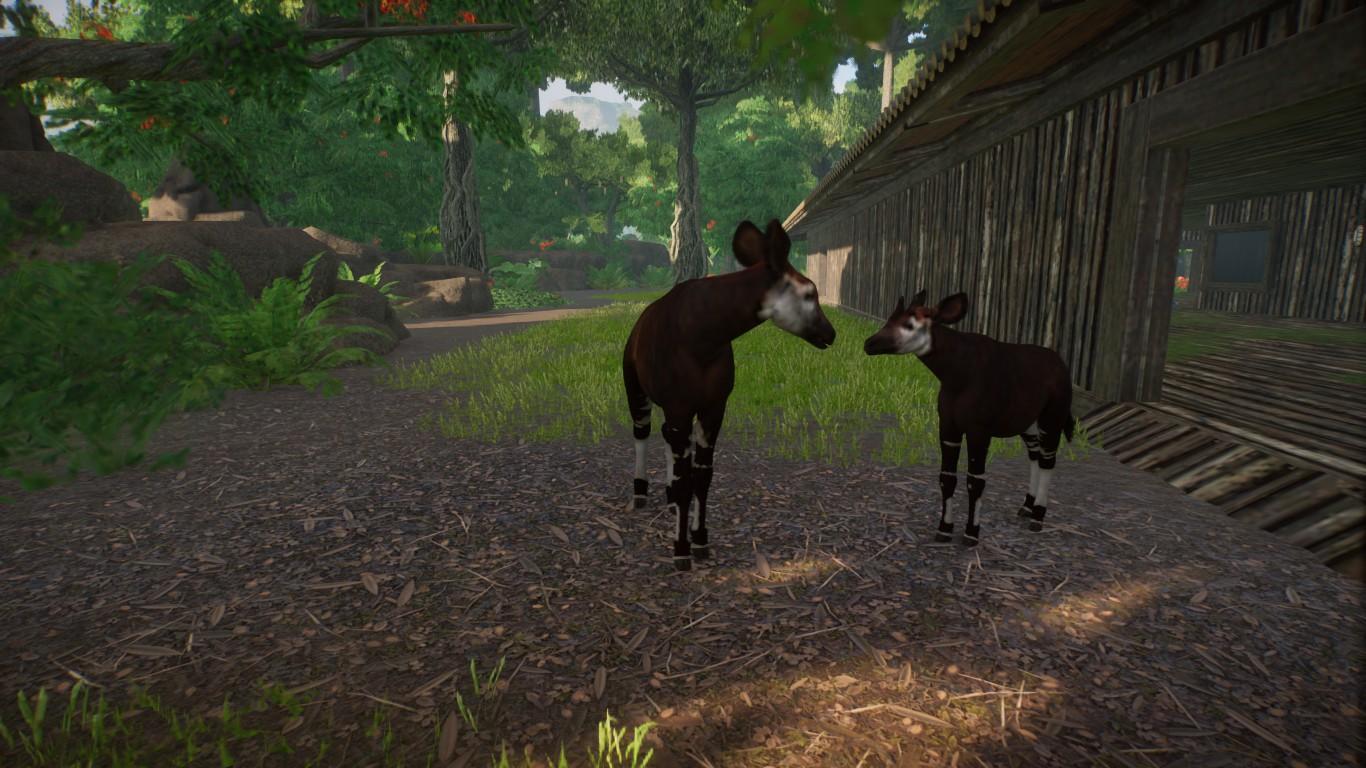
(Emecita is the one on the left).
With both animals seeming to be given along very well, we expect them to soon have offspring.
And that's it for now, we thank everyone for their patience, we promise that from now on, the Dier zoo will give news more frequently, and with all of this, we say goodbye.
With best regards, the director of the Dier zoo.
Well, it seems that we from the Dier zoo need to give a lot of explanations for our fellow companions present here. And to begin with, we ask a thousand apologies for keeping everyone in the dark for so long, however the constructions of the new entrance and habitats took longer than we expected, and because of that, the zoo reopening needed to be postponed, for long periods for our anguish. But now, the wait is over, and so our silence, for now on, no more secrets or mysteries, and insteads, we will let the wonders of nature speak for us.
So everyone, come with me, to a tale in the heart of Africa, to meet wonders beyond the human eyes, in an amazing and epic spectacle as old as time, among the many hooves and feathers, where the ancient and new blood meet each other.
So Everyone, welcome to the Dier zoo.
This is our first stop: The new entrance.
Built in a way to give a brief showcase for our guests of the wild that awaits then, the gate showcases six animals that the zoo pretends to have in the future, alongside with two warm welcome messages, written in English and Portuguese, to better understand. Alongside our logo, with its charming cheetah .
But the star of our entrance isn't its rustic architecture, nor the signs or shops, no, this title belongs to our oldest inhabitant, living in this place since the cretaceous, a creature as fascinating as the sands of time, and as majestic as any other creation of mother nature.
It name? Draak, the suchomimus.
You see, Draak fossil was found back in 1920S, shortly before the outpost the Dier zoo was built around was abandoned, leaving Draak fossil to rot. Our team found his fossil after a Red river hog herd passed on the place, making us take a look at it thanks to the chaos, just to find the fossil, discovered by the hogs. Our team, composed by the keepers Sarah and Galvin, and the caretaker Hannah, was stunned by the almost complete suchomimus fossil, alongside with the register regarding the animal. After that, they contacted the local museum, who collected most of his fossil for research purposes, aside from the skull, which they allowed to stay in the zoo, and they also helped us by giving a replica of the rest of the body. Since this day, Draak has been protecting our zoo gates.
After bypassing Draak, we Finally arrived at the zoo.
The first thing that our guest will see after the entrance is the main plaza, where multiple kiosks, alongside with our gift shop, can be found. In this area, a representation of the four regions of our zoo (Tropicalia, tales of Madagascar, the great savannah and desert outpost) can be found.
And together with the plaza, the new flamingo habitat can be found:
Reborn from the rubbles created by the storm, the new flamingo habitat isn't only a "rebuilt" from the old habitat, far from this, it's a totally new and modern house for our brave birds, a comfortable and pleasing place to live. Here the surviving flamingos from the storm, alongside some newcomers, live peacefully.
After leaving the lush plaza, we can finally find the Jewel (or perhaps, the Heart?) of the Dier zoo.
Remember when we said that the Dier zoo was built around an abandoned outpost? Well, that's not the whole truth. When the portuguese arrived on this land, centuries ago, they were seeking for a place to establish themselves, and they search, leads them to the natives from the group Ovimbundu, how kindly pointed to a place they called "Suku Huis" translated as Suku's household, the portuguese headed to the place, and when they arrived, they were stunned by what the natives have found: a river, big enough to compound multiple boats, irrigated by one of the biggest waterfall they have ever found on that continent. The river was beautiful, with multiple kinds of waterfowls and plants inhabiting the place. But the river dimension and its life wasn't the only thing that trapped their attention, no. They soon notice that by their side, the lush tropical forest takes place, with it tall trees and many strange plants, but the other side was completely different, it was a land of antelopes, with the grass taking the place of the trees, a place, we know as the African savannah.
About the Portuguese, they decided to set up camp on the tropical side of the river, and that camp eventually became the outpost we all know. And regard the river, time didn't affect it, keeping its glory all over those years, but something that has changed, is its name.
Some of the natives, the Ambundos, calls the river Ngana o muenhu, the lord of life, the portuguese calls the river "Rio da sorte" as they considered themselves lucky to find it and the british, after facing a terrible dry and see the place on all it glory, they start calling it "the glorious revenant". But we? We decided to keep using the name given by the Ovimbudos.
So now, please, whitness the glory of the Donderende Kolos, the Thundering colossus!
One curious aspect of Donderende Kolos, is that the river has existed since the cretaceous, as Draak fossil was found here, and some of the rocks on it are as old as him, implying that this great place is also one of the oldest known by mankind.
The river and its marges are protected areas, hence we can't build around it, but we can place things, such as umbrellas and allow animals to live nearby, such as the inhabitants of the new habitat: The Nile lechwes.
When the portuguese arrived on the river, the first animal they saw were the lechwes. Those endangered antelopes were eradicated in the surrounding areas during the 20S, when the outpost was abandoned thanks to the destruction caused by certain events. But now those antelopes can roam the river once again, in the new, highly natural habitat:
Those old inhabitants are not only back, but they are also back in great numbers, as the Dier zoo herd is one of the greatest herd in captivity, and to our immense joy, they have already started to reproduce, with 4 little calves already born!
Meanwhile, on the other side of the river, our okapi habitat has some big news to be said.
First of all, Our most beloved inhabitant, Moed, has finally hit adulthood
With him being now old enough, we decided that Moed was ready to participate on the conservation programs from okapis, and thanks to a local rescue center that had a female okapi incapable of returning to the wild, we got him a partner.
So now please everyone, give a warm welcome to Emecita, our new okapi.
(Emecita is the one on the left).
With both animals seeming to be given along very well, we expect them to soon have offspring.
And that's it for now, we thank everyone for their patience, we promise that from now on, the Dier zoo will give news more frequently, and with all of this, we say goodbye.
With best regards, the director of the Dier zoo.
Last edited:

